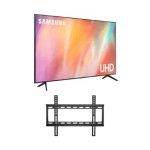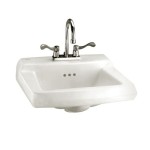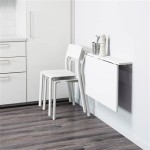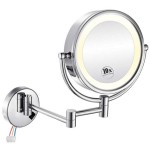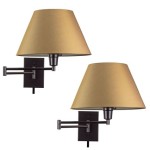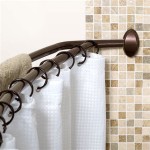Wall Mounted Infrared Patio Heater: A Comprehensive Guide
Wall mounted infrared patio heaters represent a popular and efficient solution for extending the usability of outdoor spaces, particularly during cooler seasons. Unlike traditional heating methods that warm the air, infrared heaters directly warm objects and people within their range. This article provides a comprehensive overview of wall mounted infrared patio heaters, examining their functionality, advantages, installation considerations, and factors to consider when selecting the most appropriate model for specific needs.
Infrared heating technology relies on the principle of electromagnetic radiation. Infrared radiation falls within the electromagnetic spectrum, between microwave and visible light. When infrared radiation encounters an object, such as a person or a piece of furniture, it is absorbed and transformed into heat. This direct heating method is significantly more efficient than heating the surrounding air, as it minimizes energy loss due to wind or drafts. This makes infrared heaters particularly well-suited for outdoor environments where air temperature control is challenging.
Wall mounted infrared patio heaters typically consist of a heating element, a reflector, and a protective housing. The heating element generates infrared radiation, which is then directed outward by the reflector. The housing protects the internal components from the elements and ensures safe operation. Common heating elements include quartz lamps, halogen lamps, and carbon fiber elements, each offering varying levels of heat output, energy efficiency, and lifespan.
Key Point 1: Benefits of Wall Mounted Installation
Mounting an infrared patio heater to a wall offers several significant advantages. First and foremost, it maximizes usable space. By freeing up valuable floor area, wall mounting allows for more flexible furniture arrangements and unobstructed movement. This is particularly beneficial in smaller patios or balconies where space is at a premium. Furthermore, wall mounting provides a measure of safety by keeping the heater out of reach of children and pets, reducing the risk of accidental contact and potential burns.
Another key benefit of wall mounting is the ability to direct the heat more effectively. By strategically positioning the heater, users can precisely target the areas where warmth is most needed. This targeted heating approach enhances comfort and minimizes wasted energy. Wall mounting also often offers a more aesthetically pleasing solution compared to freestanding heaters, as it integrates seamlessly with the existing architectural design of the outdoor space. The sleek and unobtrusive design of many wall mounted models adds a touch of modern elegance to any patio.
Finally, wall mounting provides protection from accidental damage. By securing the heater to a solid structure, it is less susceptible to being knocked over or damaged by strong winds. This increased stability extends the lifespan of the heater and reduces the need for frequent repairs or replacements. The durability of the mounting hardware and the overall construction of the heater are important factors to consider to ensure long-term performance and safety.
Key Point 2: Types of Infrared Heating Elements
The heating element is the core component of any infrared patio heater, and different types of elements offer distinct performance characteristics. Quartz lamps are among the most common type of heating element. They are relatively inexpensive to produce and provide instant heat, making them a popular choice for many applications. However, quartz lamps tend to have a shorter lifespan compared to other types of elements and are less energy efficient.
Halogen lamps offer a brighter and more intense heat output than quartz lamps. They also heat up rapidly but consume more energy. While initial costs might be higher, halogen lamps can provide quicker, more focused warming, especially useful in larger outdoor areas.
Carbon fiber elements represent a more advanced technology. They offer a longer lifespan, are more energy efficient, and provide a softer, more diffused heat compared to quartz and halogen lamps. Although carbon fiber elements are typically more expensive, their superior performance and durability make them a worthwhile investment for users seeking long-term value. Moreover, they are less likely to emit an intense glare, providing a more comfortable heating experience.
Another type of heating element is ceramic. Ceramic heaters are known for their energy efficiency and long lifespan. They produce a gentle, radiant heat that is ideal for creating a comfortable and consistent warmth. While they may take slightly longer to heat up compared to quartz or halogen lamps, they offer a more consistent and even distribution of heat.
The choice of heating element ultimately depends on individual preferences, budget constraints, and specific heating requirements. Considering factors such as heat output, energy efficiency, lifespan, and cost will help users select the most appropriate type of heating element for their needs.
Key Point 3: Installation Considerations and Safety Precautions
Proper installation is crucial for ensuring the safe and effective operation of a wall mounted infrared patio heater. Before commencing installation, it is essential to carefully review the manufacturer's instructions. These instructions provide detailed guidance on the proper mounting height, electrical connections, and safety precautions.
The mounting surface must be strong and stable enough to support the weight of the heater. For masonry walls, appropriate anchors and fasteners should be used. For wooden walls, it is important to locate studs to ensure a secure and stable mounting. It is crucial to ensure that the electrical wiring is properly grounded and that the heater is connected to a dedicated circuit with the appropriate amperage rating to prevent overloading the electrical system. Consideration should be given to the distance between the heater and any combustible materials, such as awnings, curtains, or foliage. Maintaining a safe clearance distance is essential for preventing fire hazards.
Safety is paramount when operating any electrical appliance. It is important to ensure that the heater is protected from the elements, particularly rain and snow. Many models are designed with weather-resistant enclosures, but it is still advisable to avoid exposing the heater to excessive moisture. Electrical safety regulations and local building codes should always be followed. Consult a qualified electrician if uncertain about any aspect of the installation or electrical connections.
Regular maintenance is important for prolonging the lifespan of the heater and ensuring its continued safe operation. This includes periodic cleaning of the reflector and heating element to remove dust and debris. Inspecting the electrical wiring and connections for any signs of damage or wear is also crucial. Immediately address any issues such as loose connections or frayed wires. By adhering to proper installation procedures and safety precautions, users can enjoy the comfort and convenience of a wall mounted infrared patio heater while minimizing the risk of accidents or malfunctions.
When selecting a wall mounted infrared patio heater, several additional factors should be considered. The size of the area to be heated is a primary consideration. Larger areas require heaters with higher heat output. Models are available in various wattage ratings, ranging from 1000 watts for smaller spaces to 3000 watts or more for larger patios. Features like adjustable heat settings and remote controls can enhance user convenience and provide greater control over the heating output.
The design and aesthetics of the heater are also important considerations. Wall mounted infrared patio heaters are available in a variety of styles and finishes to complement different architectural designs. Some models feature sleek and modern designs, while others offer a more traditional look. Choosing a heater that blends seamlessly with the existing décor can enhance the overall appearance of the outdoor space.
Finally, considering the warranty and customer support offered by the manufacturer is important. A comprehensive warranty provides protection against defects in materials and workmanship, offering peace of mind knowing that the investment is protected. Responsive and helpful customer support can assist in resolving any issues that may arise during the operation of the heater.

Wall Mounted Patio Heaters From Herschel Stylish Outdoor

Wall Mounted Patio Heaters From Herschel Stylish Outdoor

Wall Mounted Electric Patio Heaters Infrared Direct

Wall Mounted Patio Heaters From Herschel Stylish Outdoor

Ecostrad Apex Infrared Patio Heater Black 1 8kw

Wall Infrared Heater Alfresco Infralia Electric Radiant Tube

2400w Outdoor Patio Heater Wall Mounted With S Thermostat Ecoart Heating Community Infrared

Kmh 30r 3kw Infrared Outdoor Heater Castle Heaters

Electric Wall Mounted Patio Heater Dunelm

Kingdely 1500 Watt Electric Patio Heater Infrared Carbon Fiber Wall With Remote And Led Display Indoor Outdoor Use Kf020248 01 The Home


